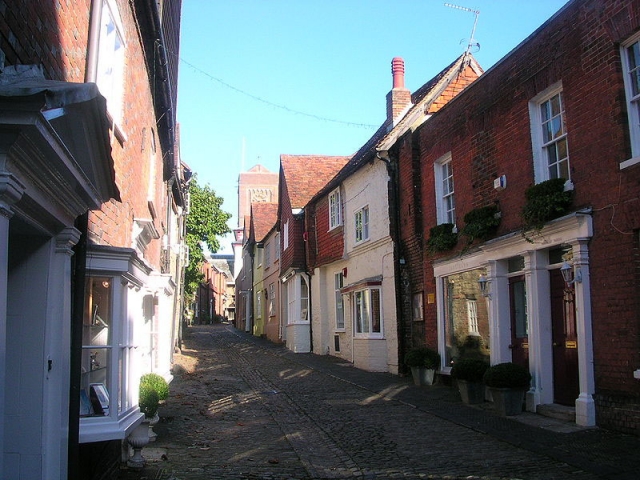Using sites and the environment exemplar: a visit to Petworth House, Sussex
Exemplar

A Year 5 class of 27 children were to visit the North Gallery at Petworth House in Sussex, where the 3rd Earl of Egremont kept his collection of sculptures and pictures. If the children were to learn I needed to give them a focus and a purpose.
Preparation
Beforehand, in the classroom, we talked about the children's own collections. They ranged from Andrew's 208 bottle caps to Melissa's 112 badges. I asked them whether they had a 'best' item and they readily agreed.
I moved on to say that we were today to visit someone's collection. This was the 3rd Earl of Egremont, who had so much money he could buy what he wanted. And he did: lots of pictures and sculptures. I told the children that I had learned something about them when they told me about their collections. Could we find out some clues from the Earl's collection that would tell us about him? At first the children were dubious, but when William suggested we could find his favourite artist by looking at the labels, others quickly volunteered ideas. We set off, with the children determined to be detectives.
Arrival
When the children and I arrived at the gallery we sat down to recall the task, to consider the rules we must obey here and to get organised into our groups. Each group was to work in a different area of the gallery then to swap with another group. We had a superb torch to help us pick out details in murky paintings hung in high places. We had exactly one hour for our investigation.
Looking and observing
The children began to look around and think aloud. This is just a selection from their comments:
- There are lots of pictures about people.
- Has there been a war and he's brought these things home?
- He's fond of animals.
- He likes dark, murky pictures. No - dark with a little light. I think he likes blues and reds.
- He likes landscapes - and water. Sunsets. Mountains. Castles.
- They don't seem to have had a lot of clothes in those days (spoken with heavy irony).
- This art gallery is like a family tree.
- He likes wild things.
- He loves big frames.
- He likes to buy only the best because he can afford it.
- He likes Greek statues, with no clothes on.
- He seems to like Turner ' yes he does, I found another four over here.
- When you look at the statues you see they are all leaning on something, and they often hold instruments.
- Most of the statues are of men and boys.
- I know how they did the big one - they did it on separate squares and pasted it all together.
How well children concentrated when given a simple, sharply-pointed task.
Questions
When we gathered together we first asked Diana, the gallery administrator, our questions.
- Why do some pictures crack?
- Why do they cover up some pictures with cloths?
- How did that huge picture get painted on squares?
- How long would it take to paint a big picture?
Looking more carefully
I now set the children a further, harder task: Which one picture or sculpture told us most about the Earl?
There isn't space to record all the discussions, but here are William and Matthew closely observing Turner's Teignmouth, 1812:
- Lots of landscape and water, people and animals. Good background - it fades away into the sky. It's got ships and wrecks of ships. I can't see how it can have been true.
- There's a lot of sky. It isn't just blue, it's a kind of faded orange or yellow golden. There are some parts of this painting that are a mystery - very dark.
We had just enough time to look at two pictures and two sculptures whilst the children who had chosen them (experts now) stood up and told us their reasons. I was frankly surprised to find how much the children favoured the rather dirty colours and misty outlines of Turner, but as I was to find from many more children, this was exactly what they did like. It was Turner I had wanted to tell the children about, but had restrained myself. Instead I had put them in the way of seeing it for themselves. Knowledge so gained is memorable, impressive and personal.
Lee and Jamie showed Swimming Horses - a dark, dirty picture, up high and very hard to see, but their enthusiasm for it won us over. They thought it had all the elements Egremont liked: dark mysterious colours, water, wrecks, animals, people and a creamy sky boiling up for a storm.
We had to hold over some of the children's choices for next week's visit, as our hour was finished.
The second visit
The following week we finished looking at the children's choices and summed up what kind of person we thought the Earl was. When I told them that the Earl had been a shy but enthusiastic man who loved novelty but admired the past, they were pleased that the character they had drawn of him from his pictures was correct.
We then changed the focus to what the children liked best, and why. I cast them as rich people to whom I was giving a million pounds each to start a collection of their own. Which picture or sculpture from this gallery would they choose to form the foundation stone of their collection? The children spent the remainder of the hour choosing, drawing and writing about their favourite painting or sculpture. On these visits history, art, speaking and listening combined seamlessly.
Based on John Fines' account of work with children at Petworth House, Sussex

